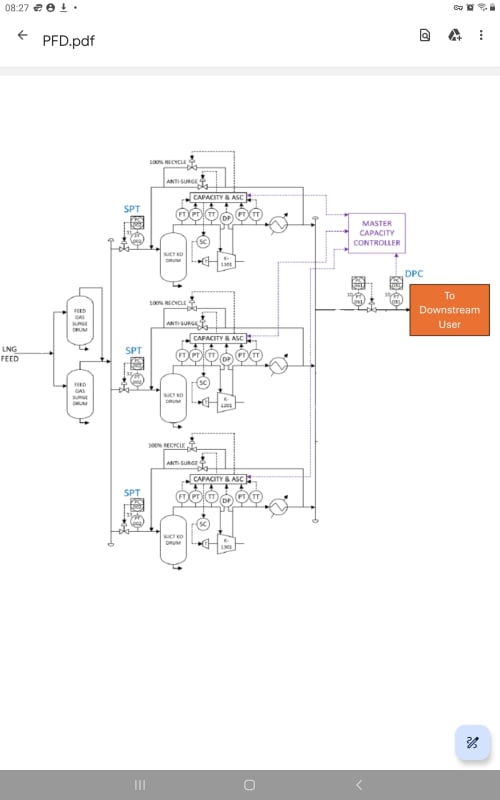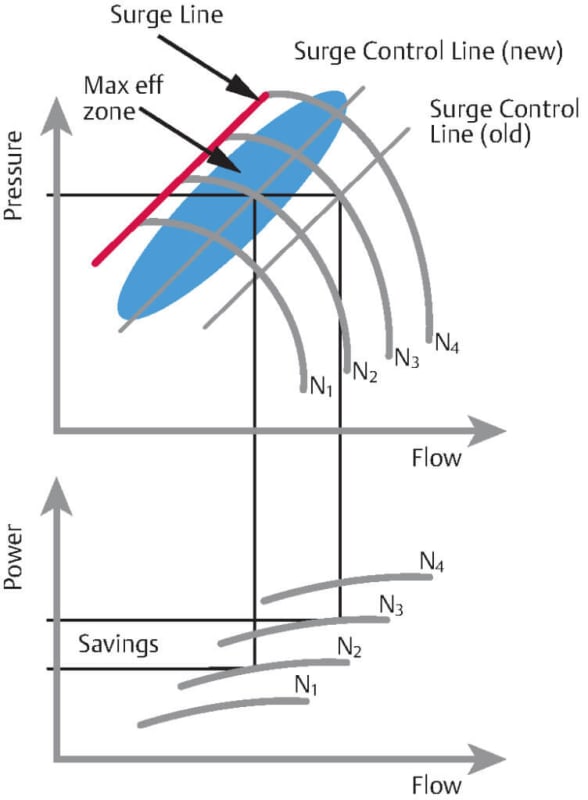What can be the purpose of individual bypass valve (100% sized) across each anti-surge control valve (100% sized) on 2 x 50% process gas (LNG) single casing centrifugal compressors driven by Steam Turbine operating in parallel configuration with load sharing feature and on discharge pressure control? (That means there are total 2 bypass valves and 2 anti-surge valves for 2 single casing compressor trains.)
The Compressor control strategy states Performance Controller (i.e. load sharing) should keep operating point of all compressors with equal surge deviation.
Can it be to assist during start/stop? If yes then how?
Can it be for load sharing? If yes then why Anti-surge valve can not carry out the same function?
I don't have any documentations in FEED indicating the design basis of this bypass valve.
Thanks in advance.
The Compressor control strategy states Performance Controller (i.e. load sharing) should keep operating point of all compressors with equal surge deviation.
Can it be to assist during start/stop? If yes then how?
Can it be for load sharing? If yes then why Anti-surge valve can not carry out the same function?
I don't have any documentations in FEED indicating the design basis of this bypass valve.
Thanks in advance.


